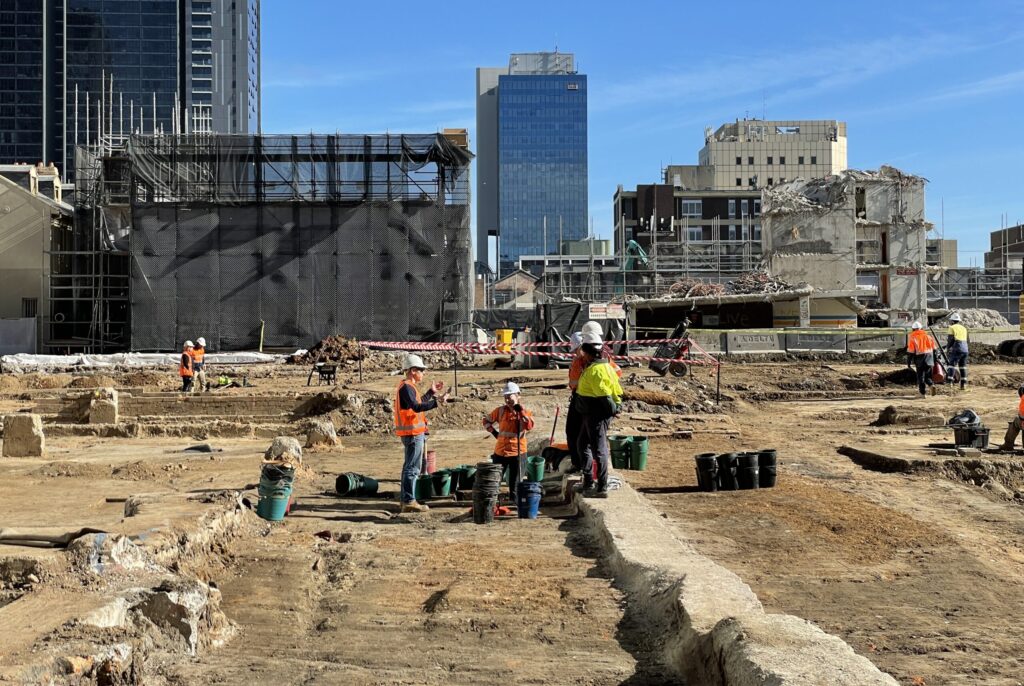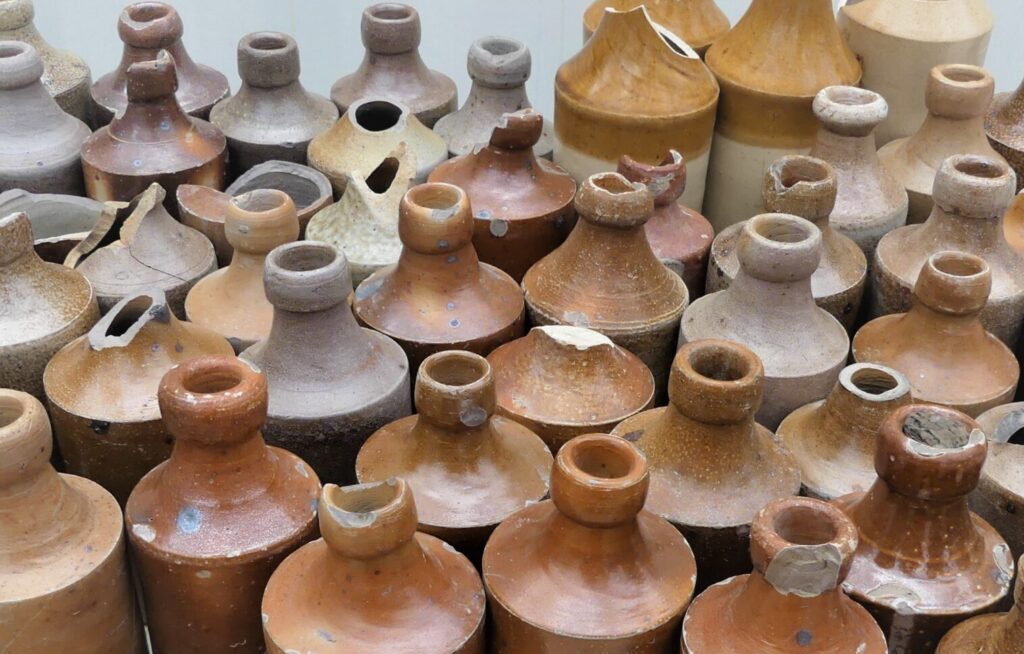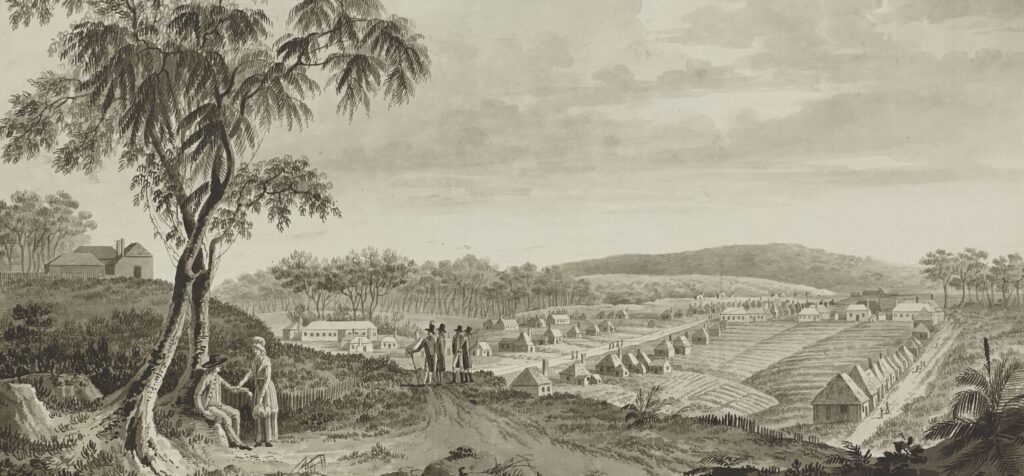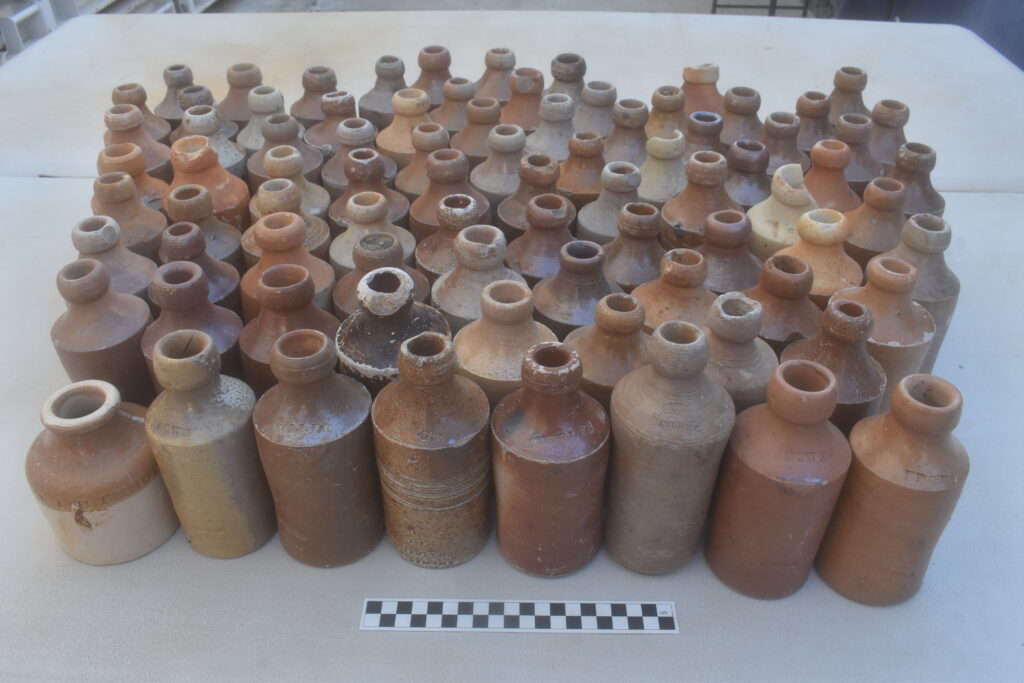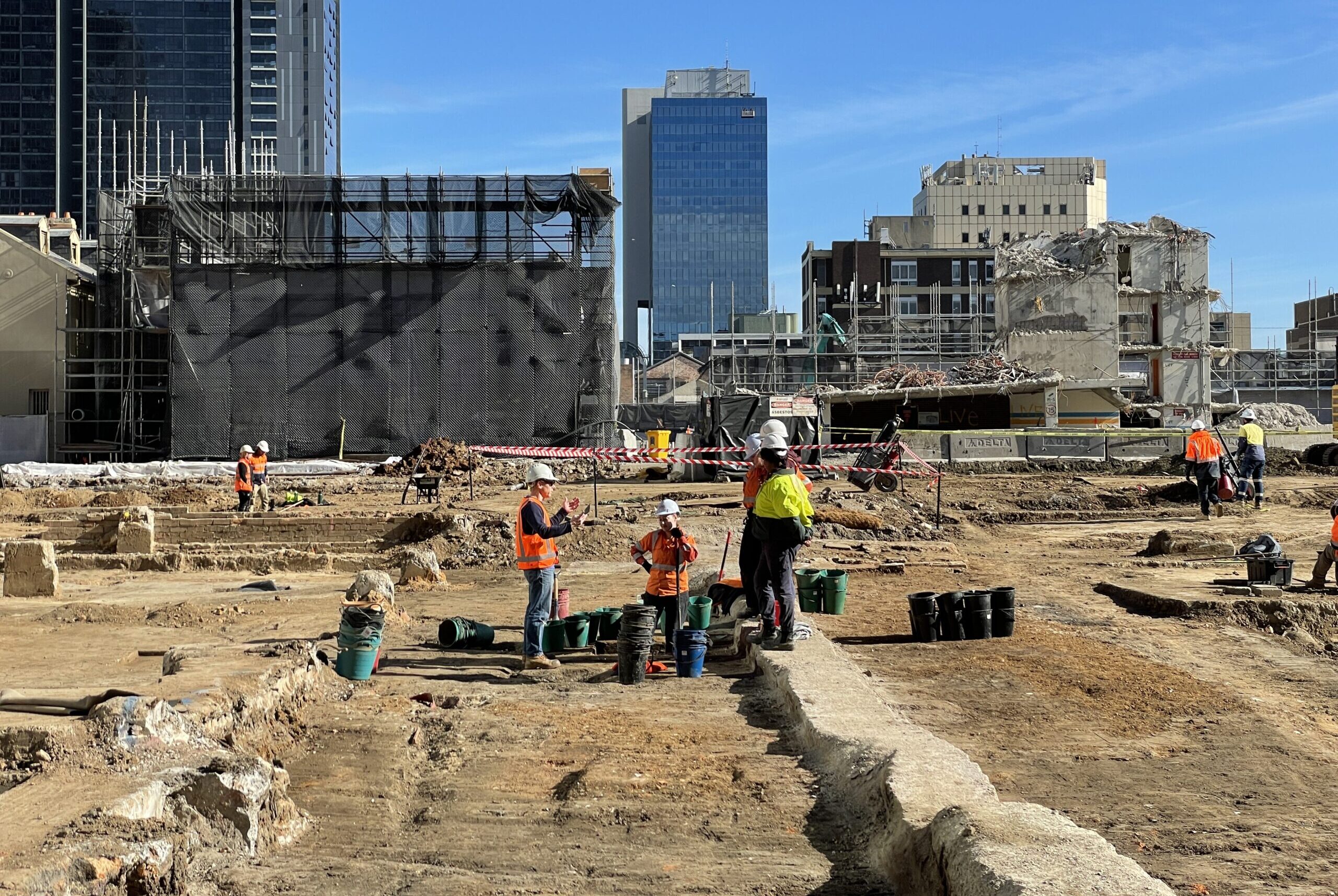
First Nations archaeology
Parramatta contains many First Nations archaeological sites and some of the earliest evidence of Aboriginal occupation, dating back 35,000 years.
The Sydney Metro Parramatta station site is bordered by an ancient sand sheet known as the Parramatta Sand Body. During the Holocene (last 10,000 years) alluvial (water derived) sediment possibly formed wetlands within the site.
The archaeological work has sought to recover evidence of past human occupation activities. Artefacts may tell us how often people visited the site, what they may have been doing, and how they adapted to environment and changes over time. Analysis of soil samples retrieved may provide information about the environment and how it changed over time.
In addition to understanding the deep time past of Parramatta, the archaeology can further our understanding of historical interactions between First Nations peoples and colonists following Parramatta’s colonial invasion in 1788.
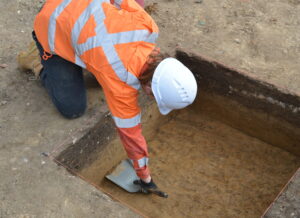
An archaeological test pit during excavation.
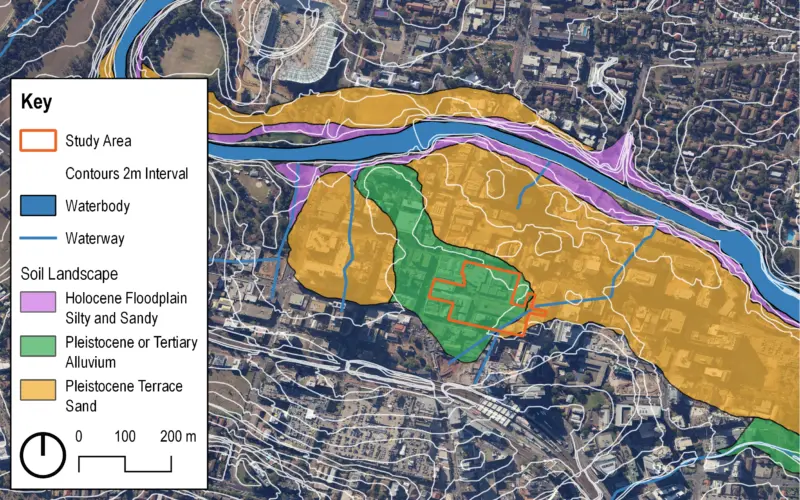
What have we recovered to date?
Several hundred stone artefacts have been recovered during excavations on site so far. Two locations contained higher densities of artefacts suggesting these areas were used for more focused activities within the ‘wetland’. Soils samples have been taken for scientific analysis to provide data about the local environment, changes over time and date ranges for the artefact deposits.
Several Aboriginal glass artefacts have also been found and confirmed by ‘use-wear’ analysis. The ‘black’ glass example shown here has use-wear reflecting a cutting motion, the feather terminations suggest that the worked material was relatively soft. This tool was likely used to cut soft plant material such as leaves or stems.
The glass artefacts were made after 1788 using traditional techniques with new materials brought by the colonists. Similar artefacts have been found on other sites in Parramatta, but they are rare.
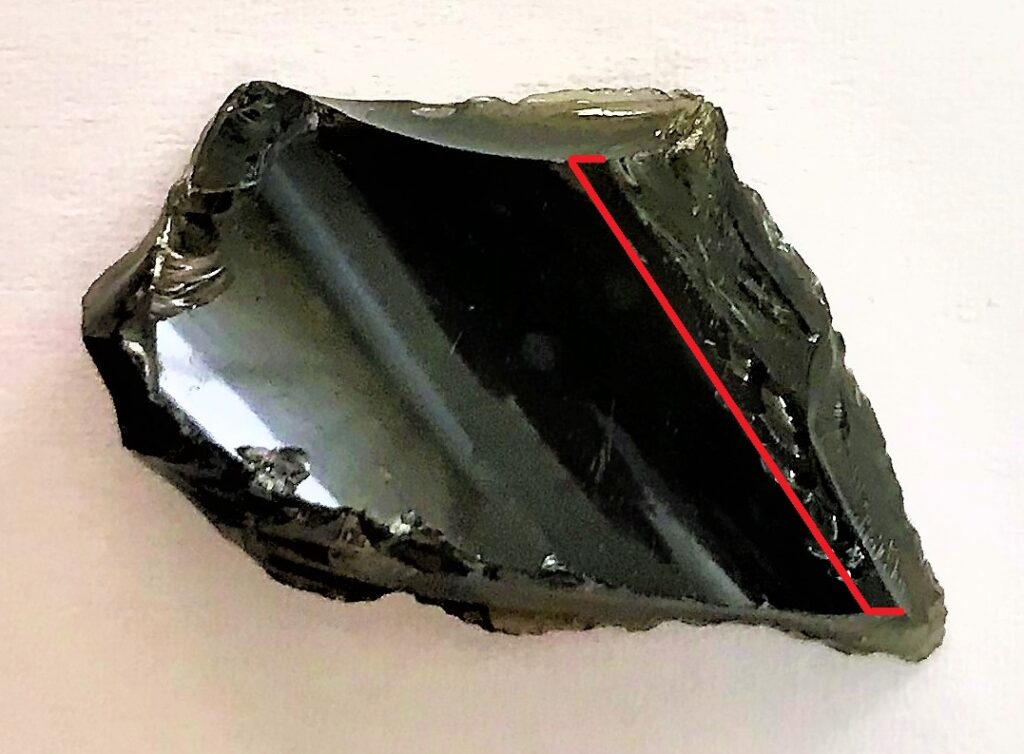
Black glass artefact, side view. The working edge is shown. Source: Dr Simon Munt for GML Heritage.
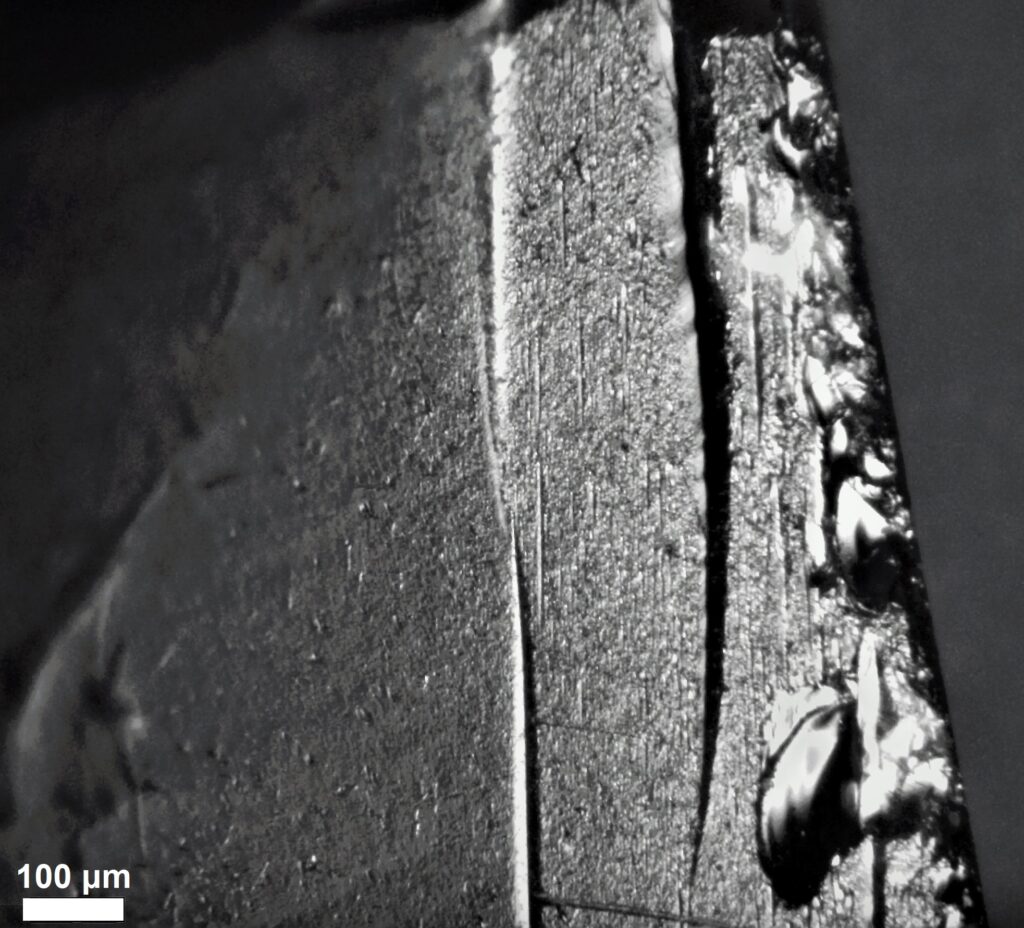
Close up, showing edge scarring and parallel striations, x100 magnification. Source: Dr Simon Munt for GML Heritage.
Interpreting meaning
The presence of the Aboriginal worked glass artefacts that were recovered from the site raise these key questions such as how and when did they become a part of the archaeological record, and could this say something about interactions between local Aboriginal people and the new occupiers of land in each lot?
To address these questions, the historical record and plans of early Parramatta are examined. The 1792 plan shows no subdivision within the site; by 1804 the area had been divided into Lots, some Lots with identified grantees and buildings. Further subdivision and construction occurred over the consequent 19 years.
If deposited prior to the late 1790s the area with the glass objects would have been on the periphery or margins of the British settlement. If after this time point, a spatial connection between the glass objects and colonial occupation can be made.
If deposited after the mid-1810s, these objects could provide insight into Aboriginal–colonial relations. One object recovered adjacent to a house, suggests direct interaction between the two cultural groups, while the objects in the rear yard of several Lots suggest an Aboriginal presence within the working space behind the cottages.
